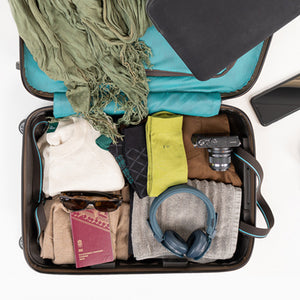THE RISK OF BLOOD CLOTS ON LONGHAUL FLIGHTS
Most of you have probably experienced that our legs swell up when we fly. But what does it really mean to sit still for many hours without moving? When the legroom is tight, the air is dry and the air pressure is lower than what we are used to? Is there an increased risk of blood clots on long-haul flights? What does the research actually say and is there an exact answer?
There seems to be a lot of research left in the field and it is complex, but the research I have read has shown some common denominators.
Swollen legs up to three days after travel
In the summer of 2001, a study was conducted called "Economy Class Syndrome", where the name referred to the cramped legroom when flying. The research team wanted to see how long flights affect fluid retention, edema in the legs. Something that was clear was that there was a marked accumulation of fluid in the legs during a long flight. The longer the flight time, the more accumulation. There was no specific difference between healthy travelers and those at risk of blood clots. It was found that this fluid accumulation continued to increase up to one day after the flight and remained in the legs for up to three days after a flight. In another study, an interesting discovery was also made, that when test subjects were allowed to sit in a Boeing 747 for twelve hours, stuck on ground level, the subjects also had a marked increase in edema in their legs. Here it was also found that the legs swelled up more at night than during the day.
Flights over 4 hours - doubled risk of blood clots
The World Health Organization started the WRIGHT (WHO Research Into Global Hazards of Travel) project in 2002, where the aim was to see if the risk of blood clots increased with air travel and how big the increased risk was. There it was concluded that during a four-hour flight 1 in 6000 suffered a blood clot, and after more than four hours flight time the number doubled. The various studies show slightly different figures on how many are affected and when the doubling takes place...but all agree that the risk increases over time.
What the studies have in common is that it is people in the risk group who mainly suffer from blood clots during a flight, they talk about over 80% of the cases.
The biggest risk factor is cramped legroom
All research reports show that it is above all the cramped leg space that is the biggest risk factor behind blood clots and fluid accumulation in the legs. The studies that I have seen testify that there is no clear connection between the low air pressure, oxygen levels and dehydration, but it needs to be investigated further. This means that other modes of travel such as car, bus and train also have an increased risk of blood clots and swollen legs during long journeys.
Support stockings prevent and are good for recovery
What emerged from the studies was that there are good reasons to use compression stockings on slightly longer flights.
The recommendation is to put on the flight socks 2 hours before the flight. Since the legs continue to swell up to a day after the flight, it is important to wear the support socks even for a few days after the flight for recovery. If the legs swell up, the blood vessels can be reduced/shrink and the risk of blood clots increases, especially in people in the risk group.
A study shows that if you use support stockings when flying, the risk of blood clots is reduced to one tenth compared to those who do not use support stockings.
When you have a long journey ahead of you, the most important thing is to move regularly, make sure you free up as much space in front of your legs as possible.
Sources:
Compression stockings reduce the risk of DVT on long-haul flights
The Cochrane Library, Issue 2, 19 April 2006
What is the risk of developing DVT during a flight and can it be prevented?
German Institute for Quality and Efficiency in Health Care, 10 January 2008
Graduated compression stockings as prophylaxis for flight-related venous thrombosis
Hsiu-Fang Hsieh PhD RN
Department of Nursing, Fooyin University, Taiwan
Formation of Edema and Fluid Shiifts During a Long-haul Flight
Mittermayr et al
Journal of Travel Medicine, Volume 10, Number 6
WHO Research Into Global Hazards of Travel (WRIGHT) project
World Health Organisation, 2002



















